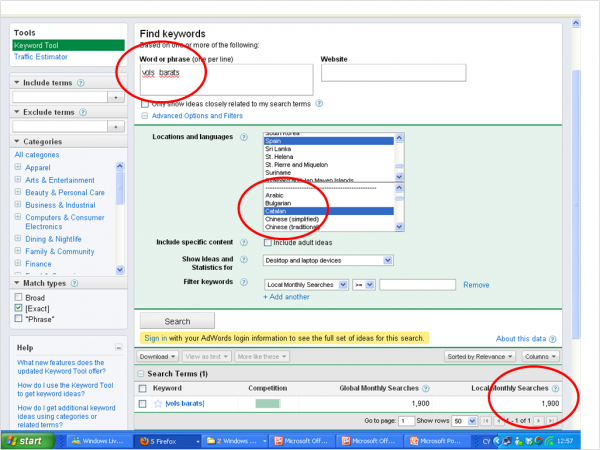Dealing With Regional Dialects & Languages In Global Internet Marketing
Did you know there is a significant difference between the meanings of the words “global” and “international”? “Global” is frankly often the front end of a steamroller which crushes all before it in a form of harmonisation or centralization process. “International” on the other hand, at least for me, tends to imply more respect for […]
Did you know there is a significant difference between the meanings of the words “global” and “international”?
“Global” is frankly often the front end of a steamroller which crushes all before it in a form of harmonisation or centralization process. “International” on the other hand, at least for me, tends to imply more respect for other cultures and identities and working with them and alongside them.
They both, however, suffer from the same weakness as do their users; they both look at the world at a “country” level which for many international marketers is job done — no need to dig any deeper.
Unfortunately, life isn’t really like that. There are nations which are highly centralized, such as the US, UK or France — and then there are those which are not — in fact, most countries.
The US, UK or France are actually much more diverse than my initial statement implies. (It used to be a joke of mine when clients approached us they’d ask which languages we worked in — and I would say “everything but Welsh” which lasted until someone replied, “That’s a shame, we need a website in English and Welsh”.)
Take A Closer Look At Regions
Some countries are split into language “regions” such as Switzerland where the country is divided into French, German, Italian and Romansh speaking areas.
With the exception of “Romansh,” which fortunately is spoken by only 60,000 people in Switzerland, the three major languages of Switzerland are easy to identify because they are major global languages. Everyone has heard of French, German or Italian. The same is true of Canada and whilst Belgium has “Flemish” most known it is very close indeed to Dutch.
The tricky countries are those with regional languages most marketers have not heard of. Take Spain, for example, Spanish is such an important and global language, that by far, the greatest presumption I come across is that everyone in Spain speaks Spanish.

Spain And Its National Regions
Take a look at the map above. This shows the many regions of Spain but more importantly it shows the several regions where there are strong local “Dialects”. One of my lecturers at University once said to me, “The only difference between a language and a dialect is an army!”
Think about that for a while and you’ll realize that what he meant is there’s no real difference — other than a political one. I can tell you that in search marketing the definition of a “dialect” is usually “Something we’re not getting into!”
Whether “Dialects” Or “Regional Languages” – There Are Opportunities
But you should. Since many global companies ignore so called “dialects”, there is a distinct competitive advantage in addressing them.
For instance, you shouldn’t think of the Catalan language spoken in Catalonia as a “dialect” but as a language opportunity and deal with it as such. The same is true of Basque and Galician which with Catalan are official languages of the regions they relate to.
Catalan is given an “official” status by Google too — since you can use Google’s keyword tool to check keyword search volumes in Spain. Galician and Basque are sadly not available via that route but do exist in Google Translate.
Having recently returned from Barcelona, Catalonia is an important commercial region chosen by companies such as Yahoo and Microsoft for some of their regional resources. The sight of Catalan flags everywhere emphasizes the emotional support given to things Catalan — which means you can win fans there too.

Vols barats -- Cheap Flights In Catalan
As the above shows, Google sees 1,900 searches for “vols barats” each month. That may be small in number — but it’s also less expensive. Each click will cost you, at current estimates, would cost you $6.91 in top position. the Spanish “vuelos baratos” would cost somewhere around $24.19 for the same position (both figures according to Google’s Traffic Estimator).
For Localization, Always Put ROI First
But how? Firstly, you should consider your own ROI, needs and objectives. But useful approaches might include keywords, adtexts and landing pages on a paid search campaign in Catalan.
Another option would be the SEO route as Google.cat — Google search in Catalan — also exists. You’ll find that the folks behind Volsbarats.cat have already figured this one before you and have a nice position lined up for themselves!
Don’t forget there are also opportunities in social media too — you don’t necessarily need to invest in a whole new localization approach just to get in the game! The message is clear, dear global internet marketer, please dig deeper. There are significant opportunities in them there dialects — or rather, regional languages.
Opinions expressed in this article are those of the guest author and not necessarily Search Engine Land. Staff authors are listed here.
Related stories